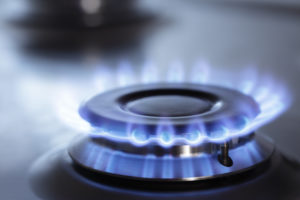 Natural gas was little changed on Wednesday as seasonal and warmer weather engulfed almost the entire US, while an inventory report on Thursday is expected to show a stockpile decline below the five-year average.
Natural gas was little changed on Wednesday as seasonal and warmer weather engulfed almost the entire US, while an inventory report on Thursday is expected to show a stockpile decline below the five-year average.
Natural gas for delivery in May traded 0.49% higher at $2.653 per million British thermal units at 7:41 GMT, shifting in a daily range of $2.661-$2.637. The contract fell 0.15% yesterday to $2.640 after it rose 0.2% the previous session.
According to NatGasWeather.com, natural gas demand in the US will be low-moderate compared to normal through April 7th, with a slightly warmer weather trend for the central and northern US over the following seven days, while the South and West remain neutral.
A warm-up will take effect over the Great Lakes and eastern US the following few days after the latest in a series of cold blasts fizzled, pushing highs across the North into the 50s and 60s, and 80s for the South. Texas will see some early season cooling demand as temperatures peak locally in the 90s.
The warm-up will, however, quickly give way to another round of cooling over the East and North on Friday through Monday, inducing higher heating demand for its duration. Lower temperatures will also push into the southern Plains and Texas, easing what cooling demand those regions had seen earlier. The West will remain mostly warm and dry, apart from the Northwest where Pacific systems will bring some cooling and showers, NatGasWeather.com said.
As next week progresses, regions with lower temperatures will once again see them rebound to seasonal levels while typical active Spring weather systems track through the country, carrying showers and thunderstorms. The central, southern and eastern US will enjoy seasonal or warmer weather, keeping heating demand at low levels, while systems arrive over the West with showers and near or slightly cooler-than-normal temperatures.
“Apart from a brief cool down April 3-6th, weather patterns are shaping up to be relatively mild for early Spring,” NatGasWeather.com said. “This will allow supplies to make up ground on deficits after the next several EIA weekly reports play out.”
Readings
According to AccuWeather.com, New York will see temperatures peak at 60-66 degrees Fahrenheit on April 2-3rd, compared to the average 56, before establishing in the low-mid 50s through April 10th. Readings in Chicago will max out at 63 degrees today and tomorrow, 9 above usual, before retreating to the mid-low 50s through April 10th as well. A warm-up in the 60s is expected afterwards.
Down South, highs in Houston will max out at 80-85 degrees throughout April 9th, above the normal 76-77, before easing to the upper 60s and 70s the following ten days. On the West coast, the high in Los Angeles on April 3rd will be 87 degrees, 16 above usual, but will drop to the mid 60s to lower 70s through April 20th.
Supplies
Thursdays inventory report will likely reflect a slightly thinner than average inventory decline of 10-15 bcf as widespread mild weather dominated the majority of the country last week, although some regions saw light cooling demand as well. The five-year average withdrawal for the week ending March 27th is -22 bcf, while gas in storage declined by 71 bcf a year ago.
The following report, due on April 9th, will likely bring a small inventory build instead of an average decline as seasonal and warmer weather persists this week. The five-year average inventory drop for the seven days ended April 3rd is -2 billion cubic feet, while stockpiles declined by 8 bcf during the comparable period a year earlier.
The Energy Information Administration reported last Thursday that US natural gas stockpiles rose by 12 billion cubic feet in the week ended March 20th. Total gas held in US storage hubs amounted to 1.479 trillion cubic feet, narrowing a deficit to the five-year average inventories of 1.673 trillion to 11.6% from 13.3% a week earlier. The surplus over year-ago stockpile levels expanded to 63.6% from 52.8% last week.
Pivot points
According to Binary Tribune’s daily analysis, May natural gas futures’ central pivot point stands at $2.649. In case the contract penetrates the first resistance level at $2.677 per million British thermal units, it will encounter next resistance at $2.713. If breached, upside movement may attempt to advance to $2.741 per mBtu.
If the energy source drops below its S1 level at $2.613 per mBtu, it will next see support at $2.585. If the second key support zone is breached, the power-station fuel’s downward movement may extend to $2.549 per mBtu.
In weekly terms, the central pivot point is at $2.696. The three key resistance levels are as follows: R1 – $2.776, R2 – $2.913, R3 – $2.993. The three key support levels are: S1 – $2.559, S2 – $2.479, S3 – $2.342.





